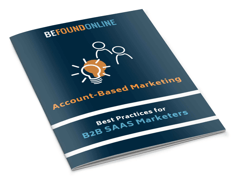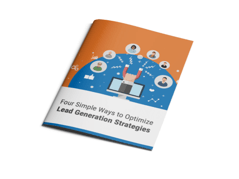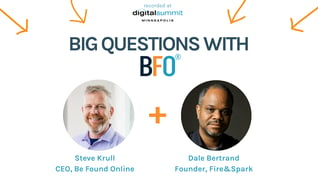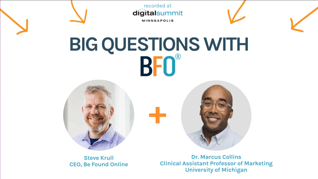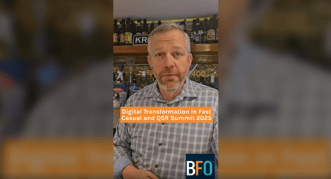SEO Strategies for ChatGPT and GPT Search
January 07, 2025
10 Minute Read
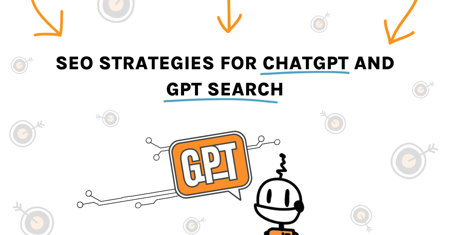
Update Your SEO Strategies for ChatGPT and GPT Search
As generative AI models like ChatGPT and GPT Search become part of everyday user experiences, SEO strategies need to keep up with this fast-paced evolution. Unlike traditional search engines, these models focus on delivering conversationally relevant, factually accurate, and concise yet authoritative answers. This means it’s time to rethink how we approach content optimization and shape our digital presence.
First, we need to understand what ChatGPT and GPT Search are.
What is ChatGPT?
ChatGPT is sort of like having an assistant at your fingertips, able to understand and respond to questions, provide explanations, brainstorm ideas, write stories, and much more, in a natural, easy-to-understand way.
In technical terms, ChatGPT (and other, similar platforms like Perplexity AI) is a large language model developed by OpenAI, and is based on the GPT (Generative Pre-trained Transformer) architecture. It leverages deep learning techniques, specifically transformer neural networks, to generate contextually relevant and coherent text responses.
GPT (Generative Pre-trained Transformer) architecture. It leverages deep learning techniques, specifically transformer neural networks, to generate contextually relevant and coherent text responses.
Trained on diverse datasets, it predicts the next word in a sequence based on the input, enabling it to perform tasks like natural language understanding, content generation, and conversational interactions. Its functionality is rooted in pre-training on vast text corpora followed by fine-tuning to optimize for specific user interactions.
Whew! That's a mouthful. Bottom line, ChatGPT is a powerful tool that can help you find information, answer questions, and even create content.
What Is GPT Search?
GPT Search is a tool powered by advanced AI and is built on the GPT architecture. Instead of just finding web pages that match your keywords, it uses natural language understanding to generate detailed, conversational responses to your queries.
By analyzing vast amounts of text data during training, GPT Search can process context, understand complex questions, and deliver concise, accurate, relevant answers in plain language. GPT Search is designed to make searching smarter and more intuitive by focusing on the intent behind your question, not just the words you use.
To that end, we think there are six primary areas of focus to take advantage of AI for SEO:
- Content optimization for conversational relevance
- Authority and credibility (E.E.A.T.)
- Structured data and content hierarchies
- Content depth and brevity
- Multimedia and multimodal content
- Localization and personalization
Let's explore each one.
How to Use AI for On-Page SEO
Implementing SEO for AI search is not as difficult as you may think. Search has been about natural language going back over a decade to the Google Hummingbird update of 2013, and then the launch of Google RankBrain in 2015. AI is essentially doubling down on that concept. When performing on-page SEO, keep these principles in mind and use these strategies to appear in GPT search and grow your online presence.
Content Optimization for Conversational Relevance
This is simply optimizing your content not for keywords, but for tone and voice. Creating content that's conversational and natural-sounding will give you a better chance of appearing in GPT Search results and being cited in places like Google's AI Overviews.
voice. Creating content that's conversational and natural-sounding will give you a better chance of appearing in GPT Search results and being cited in places like Google's AI Overviews.
To accomplish this, use these strategies:
- Focus on Natural Language: Write your content in a conversational tone that feels natural and approachable. Think about how your audience would ask a question and let that guide your writing style. Or better yet, conduct questions-based keyword research. Note that this doesn't always mean repeating search queries back to the user, but instead answering their questions with your content.
- Be Mindful of Semantic Search Readiness: Use varied phrasing and synonyms to capture broader keyword intent, reflecting how users frame queries. We've done this all along with close variations of keywords. It's even more important now, so include it in your keyword research.
- Use an FAQ Format: Include FAQs or dialogue-style content that aligns with question-and-answer delivery typical in ChatGPT responses. Use this one sparingly… no one wants an internet full of FAQs. Remember the content must be valuable and helpful, not just optimized.
Authority and Credibility (E.E.A.T.)
Sure, it's a chore to wade through the high volume of low-quality information on the internet. But it's both necessary and worthwhile to find those nuggets of authoritative information from the right sources to make your own content stand out as dependable. Plus, your content needs to fulfill E.E.A.T. (Experience, Expertise, Authoritativeness, and Trustworthiness) parameters to be successful in search engines, especially Google.
information on the internet. But it's both necessary and worthwhile to find those nuggets of authoritative information from the right sources to make your own content stand out as dependable. Plus, your content needs to fulfill E.E.A.T. (Experience, Expertise, Authoritativeness, and Trustworthiness) parameters to be successful in search engines, especially Google.
To accomplish this, use these strategies:
- Strive for Fact-Checked Accuracy: Provide up-to-date, accurate information that AI models can verify against credible sources. The key word there is credible. Do your due diligence to ensure the information you're sharing is correct, especially if you're using GPT Search for your research as AI models serve up inaccurate information from time to time.
- Provide Author Attribution: Showcase expert authors and their credentials to strengthen trust signals. To do this, you can either have subject matter experts write your content or publish an interview with them with their views in your content.
- Use Citations and References: Clearly cite trusted, high-authority sources. It boosts credibility and increases the chances of your content being featured in AI responses. Make sure you're getting your information from reputable sources, not just the first search result.
Structured Data and Content Hierarchies
Structured data is an SEO solution to take your content from obscure and unknown to ranking on the first page and in AI search results if it's properly implemented. Content hierarchies take your content from the dreaded "wall of text" to helpful content that's easier and more pleasant to read and consume.
and unknown to ranking on the first page and in AI search results if it's properly implemented. Content hierarchies take your content from the dreaded "wall of text" to helpful content that's easier and more pleasant to read and consume.
To accomplish this, use these strategies:
- Use Schema Markup: Using structured data helps both traditional search engine AI models easily understand the purpose and relevance of your content. It provides clear, organized information that enhances search visibility and improves user experience. By implementing structured data, you’re making it easier for both AI and users to find exactly what they need.
- Establish Clear Hierarchies: Organize your content with clear headings and subheadings to make it easy for AI to navigate and understand. This is beneficial for readers, who should remain the focus of all your content regardless of how you optimize it.
Content Depth and Brevity
There's a school of thought that says longer content ranks better. In the age of AI, it's all about brevity and getting straight to the point. It's possible to do both—be concise while also being thorough.
age of AI, it's all about brevity and getting straight to the point. It's possible to do both—be concise while also being thorough.
To accomplish this, use these strategies:
- Create Layered Content: Offer concise, high-value summaries (e.g., "TL;DR" sections) followed by deeper, detailed content for users who want more. Notice we said followed by. Have you ever found a TL;DR section at the bottom of a blog post and wondered why it wasn't at the top? Then you've felt the same frustration we have.
- Focus on Snippet-Worthy Content: Optimize for snippets by delivering short, direct answers to specific queries. Again, this doesn't always require repeating the question-based query. But it does require concision, brevity, and accuracy, especially for local SEO.
Multimedia and Multimodal Content
This type of content can make your website more engaging and accessible to a diverse audience. Combining text with visuals like images, videos, and infographics can enhance comprehension and retention of complex topics. Also, multimodal content—such as combining text, audio, and interactive elements—caters to different learning preferences and improves user experience, keeping visitors on your site longer.
accessible to a diverse audience. Combining text with visuals like images, videos, and infographics can enhance comprehension and retention of complex topics. Also, multimodal content—such as combining text, audio, and interactive elements—caters to different learning preferences and improves user experience, keeping visitors on your site longer.
To accomplish this, use these strategies:
- Incorporate Enhanced Media: As multimodal GPT capabilities evolve and grow more sophisticated, incorporating videos, infographics, and images into your content can make it more engaging, while also giving AI more to work with. Make sure media is optimized with detailed descriptions, alt text, and clear metadata so both people and AI—and search engines—can easily understand their purpose.
- Practice Transcript Optimization: Transcripts make your videos, podcasts, and other media formats more inclusive, allowing users with hearing impairments or those who prefer reading to engage with your content. They also give AI tools like search engines and generative models a clear, text-based way to understand and index your multimedia, helping your content reach a wider audience.
Localization and Personalization
Localization ensures your content speaks to local audiences by adjusting for language and cultural differences. Personalization helps tailor the content to individual preferences, making it feel more relevant and engaging. Together, these tactics help AI deliver content that truly connects with users, improving both experience and results.
for language and cultural differences. Personalization helps tailor the content to individual preferences, making it feel more relevant and engaging. Together, these tactics help AI deliver content that truly connects with users, improving both experience and results.
To accomplish this, use these strategies:
- Localized Queries: Tailor your content to match regional dialects and local preferences to connect with your audience on a more personal level. Through word choice, tone, or cultural references, you can show you understand and respect their unique context. Plus, as generative models get better at localizing content, this extra effort can make your material stand out even more.
- User Intent Personalization: Create content for varied user intents, whether they’re exploring, looking to make a purchase, or searching for information. By understanding the context of each query, you can provide the most relevant and helpful answers. This approach ensures your content meets users where they are in their journey, making it more likely to resonate and engage.
Everything Old Is New Again
SEO for AI is all about crafting content that’s easy to find, highly relevant, and genuinely valuable to users—which is what we all should have been doing all along anyway. It's just more important than ever in the age of AI. Think of AI as your content ally, and tailor your strategies to match how these generative models understand and share information.
By focusing on clarity, credibility, and a conversational tone, you can position your content as a trusted go-to resource in the ever-evolving, AI-driven landscape.
Let Us Be Your AI Ally
Learn more about our award-winning agency and our team of digital marketing and content experts. We're ready to implement these ChatGPT SEO strategies to grow your presence online. Contact us today and let's get started!
Want a Monthly Roundup of Digital Marketing News/Trends?
Sign up for the BFO Newsletter below!

Adam Woodburn
As one of our SEO Analysts, Adam may very well be the Poster Child for BFO. He is pretty much a compilation of what our company stands for – charismatic, passionate, creative, bold, energetic, flexible and FUN! With 14 years of digital marketing experience under his belt and a personality that lights up the room, (including the time he dressed up as Cindy Lou Who for our holiday e-card video), Adam makes us all happy to be at BFO and so very happy to have him in our midst.
CATEGORIES
SUBSCRIBE TO OUR BLOG
Stay up to date with the latest industry best practices in digital marketing!
















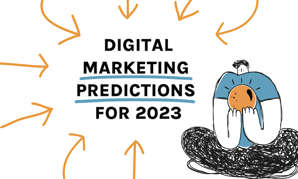






.png?width=339&height=179&name=Webinar%20Banner%20(1).png)

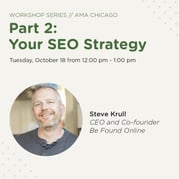

.png?width=339&height=179&name=July%20Webinar%20(Newsletter).png)

.png?width=339&height=179&name=Webinar%20Banner-April-02%20(1).png)
%20(4).png?width=339&height=179&name=Webinar%20Banner-May-02%20(1)%20(4).png)




.png?width=339&height=179&name=March%202023%20Webinar%20Ad%20(autoresponder).png)

